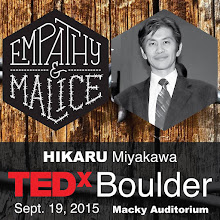Today is a special Thursday before Easter.
It is usually understood as a day when the final supper - the "Last Supper" took place with Yeshwa (Jesus) and the 12 disciples. (There are other theories regarding the nature of this supper, and some are claiming that this was not the Passover Seder.)
Each year around this time, I contemplate about this sacred Thursday in relation to the mural of the Last Supper painted by Leonardo da Vinci in the church of Santa Maria delle Grazie in Milan.
.
Between 1995 and 1999, I have painted the mural of the Last Supper based on Leonardo's brilliant work at the high school where I was teaching back then. I have spent around 2,000 hours total to complete this painting.
(これは私がまだボールダーのシュタイナー高校で教えていた頃2000時間を費やして描いた、レオナルド・ダ・ヴィンチの「最後の晩餐」をベースに画いた「複製」壁画。師レオナルド大先生と私の生徒達に捧げた。)
I see the immaturity in my technique and the interpretation to the point that if I were to paint the mural again, I would have done it differently.
What I wanted to share today is not about my painting, but the environment where Leonardo's original is located. Back in the days of Leonardo, this room was used as a dining room for the Dominican monks. Whether the monks actually took meal or not, I do not know, and if so, I also do not know whether they ate silently or not. Either way, it must have invoked the special feelings to be in the middle of the room between the 2 large murals depicting the meaningful, intense scenes from the Gospels.
It is easy to focus upon the now faded but magnificent mural by Leonardo, but there is another mural on the opposite (south) side of the room facing the Last Supper.
It is depicting the crucifixion of Yeshwa with 2 thieves surrounded by the multitude of people.
This mural was painted by Giovanni Donato da Montorfano, and Leonardo was said to have painted the family of his patron, Ludovico il Moro (now also faded).
Anyone standing between the 2 murasl with the keen sense would notice that he/she is standing in the timeline between the 2 major events, one on Thursday early evening and the other one on Friday afternoon when Yeshwa had expired on the cross.
Then, what did take place between the supper and the crucifixion?
If we stick with the Gospels, we are reminded of the story of the agony in the Garden of Gethsemane followed by the "delivering-up" of Yeshwa by Judas. I say delivering-up instead of using the word "betraying" because in both Koine Greek and Aramaic, the word translated as "betraying" is actually "deliver-up".
( The word for betrayal in Aramaic is different.)
Then, Yeshwa was challenged by Caiaphas and Pontius Pilate. Yeshwa was also mocked and shamed.
Meanwhile, most of the disciples departed him, and Peter did deny knowing him.
Barabus was forgiven, and Yeshwa was condemned to death. Then, Yeshwa walked along the stations of the cross (i.e., the miraculous story of Veronica's veil).
Eventually, he was crucified and uttered the 7 Last words before he expired.
Anyone visiting the room can contemplate what the monks in those days may have contemplated. One of the themes may be the acceptance of enormous challenges (responsibilities), agony, humiliation, and death (symbolic) in one's life before the triumphant rebirth.
Leonardo during his life also had faced numerous challenges. On some occasions, he was humiliated as well, but he kept on going and endured.
I wonder what went on in his mind (and through his heart )while he was composing and executing this mural.
I sincerely hope that we can embrace the given challenges, whatever that may be, and not only overcoming them but to transform ourselves and keep shining our inner beauty towards the world in this auspicious year of 2012!






